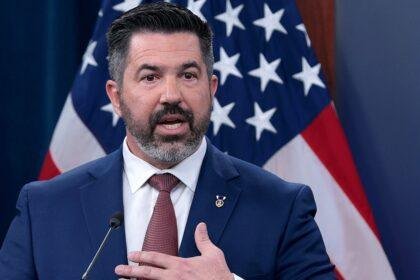Trump Coin Proposal Sparks Debate Over Commemorative Currency
In a move that has ignited discussions about tradition and legality, the Trump administration is reportedly seeking to feature former President Donald Trump on both sides of a commemorative $1 coin. This initiative, aimed at celebrating the United States’ 250th anniversary, has raised eyebrows and questions about the implications of depicting a living president on U.S. currency.
The Proposal Unveiled
On October 3, the White House amplified a post from U.S. Treasurer Brandon Beach, confirming the administration’s intention to mint a coin featuring Trump’s profile on one side and an illustration of him pumping his fist on the reverse. This imagery is particularly poignant, as it references a rallying cry following an assassination attempt on Trump in Butler, Pennsylvania, during the 2024 campaign. The phrase “Fight Fight Fight” encircles the coin, echoing sentiments from his supporters.
White House Press Secretary Karoline Leavitt commented during a press briefing, “I’m not sure if he’s seen it, but I’m sure he’ll love it,” further fueling speculation about the coin’s potential impact.
Legal Considerations
Historically, U.S. currency has avoided featuring living individuals, particularly sitting presidents. However, exceptions have occurred. Kevin Hassett, chair of the White House National Economic Council, noted on CNN that there have been instances where living figures have appeared on U.S. currency, albeit rarely.
The legal framework surrounding this proposal is complex. While legislation has previously prohibited living presidents from being depicted on certain coin series, the proposed Trump coin falls under the Circulating Collectible Coin Redesign Act of 2020. This law, signed by Trump himself, allows for redesigns of various coins in celebration of the nation’s 250th anniversary, set to launch in 2026.
The act specifies that no portrait of a living person may appear on the reverse of the coin, but it does not explicitly ban such depictions on the front. This loophole could pave the way for the Trump coin, as the process would primarily involve administration officials, allowing for direct presidential oversight.
Historical Context
The tradition of avoiding living figures on U.S. currency is deeply rooted in the nation’s history. The founders of the United States were keen to establish a republic that distanced itself from monarchical traditions, which often featured reigning monarchs on currency. Gabriel Mathy, an economics professor at American University, emphasized that this practice is integral to American republicanism.
Despite this tradition, there have been notable exceptions. For instance, during the Civil War, Spencer Clark, a federal official, controversially placed his own image on a five-cent note due to a legislative oversight. This incident led to the 1866 law prohibiting living figures on U.S. currency, although it did not extend to coins.
Previous Commemorative Coins Featuring Living Figures
While the tradition is strong, there have been instances where living individuals have appeared on U.S. coins. The first notable example occurred in 1921 when a commemorative coin was minted to celebrate Alabama’s centennial, featuring the state’s first governor alongside its then-current governor. Another example is the 1926 half dollar, which depicted both George Washington and Calvin Coolidge during the nation’s sesquicentennial celebration. However, this coin was met with public disapproval, leading to the majority being returned and melted down.
More recently, the U.S. Mint produced coins honoring Eunice Kennedy Shriver, founder of the Special Olympics, and a coin commemorating Ronald Reagan shortly after his death. These examples illustrate the nuanced history of living figures on U.S. currency, albeit under specific circumstances.
International Precedents
Interestingly, the concept of minting a coin featuring Trump is not entirely unprecedented on a global scale. In 2025, Liberia issued a $1 silver coin adorned with Trump’s image, complete with a laurel crown reminiscent of Roman emperors. This coin, marketed with the motto “In Don We Trust,” has become a collector’s item, priced between $150 and $200.
Conclusion
The proposal to mint a commemorative coin featuring Donald Trump has reignited debates about the intersection of tradition, legality, and the evolving nature of U.S. currency. While the legal framework may allow for such a coin, the historical context raises questions about the implications of depicting a living president. As the nation approaches its 250th anniversary, this initiative serves as a reminder of the complexities surrounding national identity and the symbols that represent it. Whether this coin will come to fruition remains to be seen, but it undoubtedly adds another layer to the ongoing discourse about the role of currency in American society.










